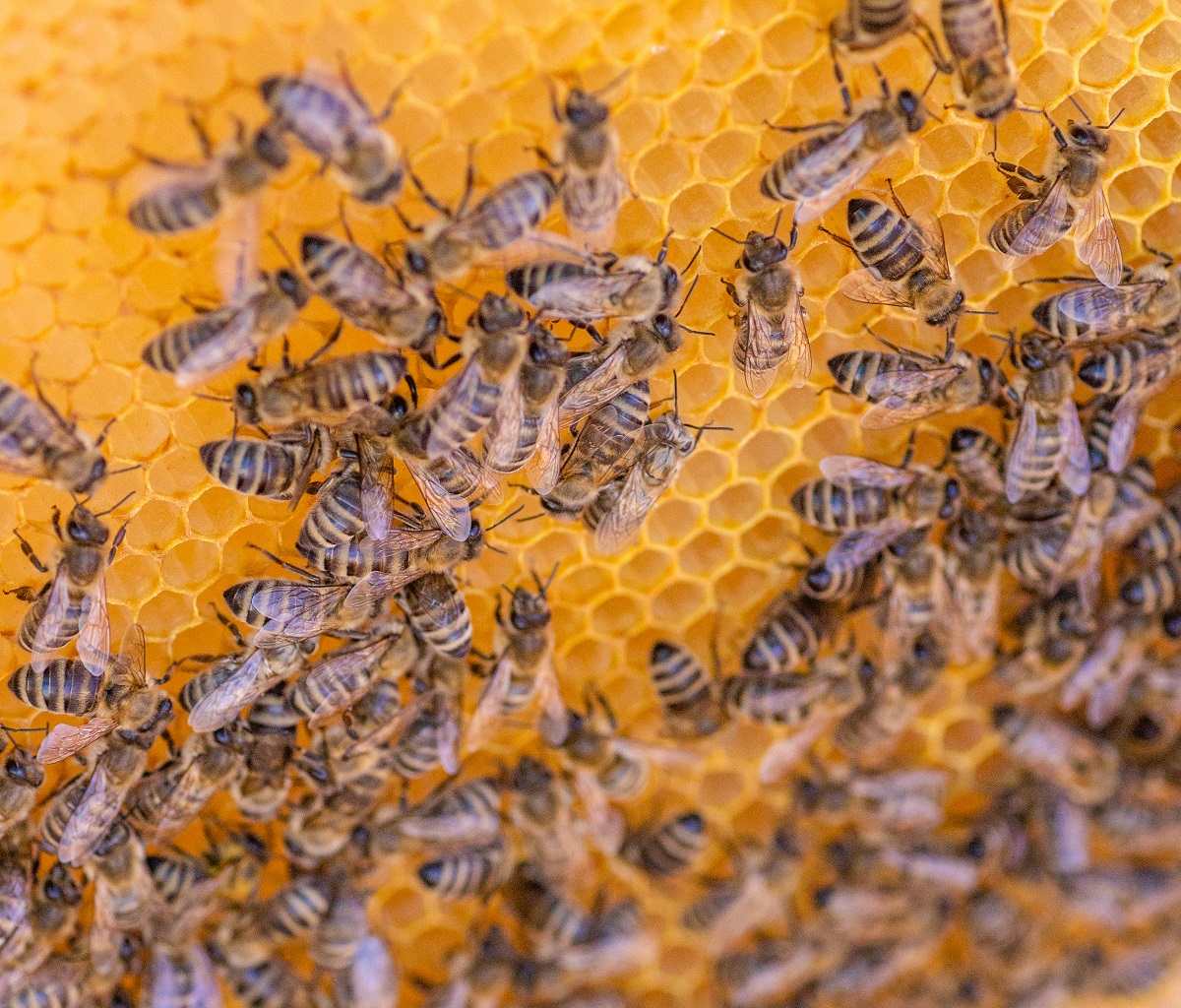
What’s Inside the Cells of a Beehive?
According to bee and wasp removal experts, the inside of a beehive is as intricate as it is important to the life of bees. There are about 100,000 hexagonal cells which are created with over two pounds of beeswax. This is the heart of a bee colony; the place they live,eat and create more life. Every honey bee has a specific job that contributes to the hive, from drone to worker to queen. Here is how the beehive works.
Beehives are made up of thousands of six-sided cells that provide strength and structure to the hive. When all the cells are connected, they serve as a rigid foundation for the hive walls and thus provide protection for the colony. The bees get a lot of their work done inside a hive, so it’s important that they are hidden in this structure from predators. The hexagonal shape allows for the hive to be properly sealed and compact, so that everything stays within. Plus, it’s easy to expand the hive when needed. These cells offer the right amount of space to develop brood and store honey without exhausting the worker bees in their creation.
Bee and wasp removal professionals know that beehives are made from beeswax, which is a combination of alcohols and fatty acids. This is a flexible yet strong material to work with. The worker bees are born with special glands, located on their abdomens, that can produce these wax scales. Worker bees pass wax scales back and forth and construct the honeycomb.
The queen bee can lay around 2,000 eggs in a given day. The eggs are kept in the beehive cells during key development phases and helped along to become a worker bee (fertilized) or drone bee (unfertilized). The cells act as a kind of nursery for these growing bees. The cell will be kept open to the hive during the first three days so that adult bees can feed the larva, which occurs over a hundred times a day. When the larvae are ready to reach their pupa phase, the cells will then be closed with beeswax in order to allow the young bees to create their cocoon. When the bee has fully grown, they will emerge from their nursery cell and join the colony. Then, janitor bees will come around to clean up the cell. When beehive cells are not being used to mature bees, they will be used to store honey. This is especially important for the winter months.
As you can see, the beehive has a multifunctional purpose in the life of a bee, which is why it is such an important structure. Unfortunately, sometimes these hives will be built in or around domestic spaces, which can threaten the safety of anyone around it. Honey bees do not typically sting people unless they sense a threat to the colony. However, an infestation can still pose a serious danger to homeowners and neighbors. If you find a beehive too close to your home, then you should call bee and wasp exterminators to safely eliminate the threat.